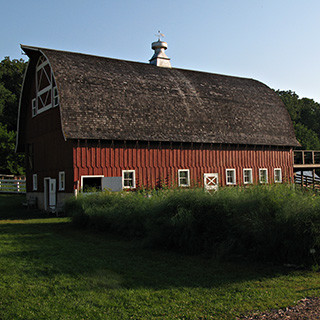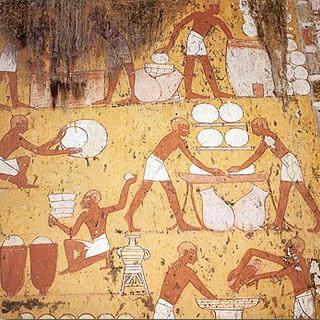
The Guadalupe River that flows through Texas used to be known as The River of Nuts, a fact that Wikipedia does not confirm. The nut in question is the pecan, Carya illinoinensis, and the pecan tree is the state tree of Texas. The groves of wild pecans that lined the rivers of Texas are, however, threatened by the very popularity of the nuts they bear, and in particular by the fickle global nut market. The Chinese, you see, have gone nuts for pecans, increasing their purchase of American pecans from 3–4% in 2006 to 30–40% today. And if they abandon the pecan as quickly as they took it up, the wild pecan groves might be abandoned too. All this, and much more, I learned from James McWilliams, professor of history at Texas State University. His new book is one of those delights that looks at the global sweep of human endeavour through a little lens, in this case the pecan.
Podcast: Play in new window | Download (Duration: 21:00 — 19.4MB)
Subscribe: Google Podcasts | Spotify | Android | RSS | More
Why it was the Chinese, rather than the French, the English or some other country, that chose to absorb the pecan surplus, I guess we’ll never know. McWilliams told me that Chinese people he spoke to believe the nuts prolong life; irrational as that may seem, no American grower is going to say they don’t. And while the high prices are good news for growers, they’re not so good for people who want pecan-containing industrial food.
Notes
- James McWilliams’ book is The Pecan: a history of America’s native nut. There’s an extract in Texas Monthly online.
- iTunes artwork photo by Melanie McDermott
- Outro music Pecan Pie by Golden Smog.
 What, really, is the point of conserving agricultural biodiversity? The formal sector, genebanks and the like, will say it is about genetic resources and having on hand the traits to breed varieties that will solve the challenges tomorrow might throw up. Thousands of seed savers around the world might well agree with that, at least partially. I suspect, though, that for most seed savers the primary reason is surely more about food, about having the varieties they want to eat. David Cavagnaro has always championed that view. David’s is a fascinating personal history, which currently sees him working on the
What, really, is the point of conserving agricultural biodiversity? The formal sector, genebanks and the like, will say it is about genetic resources and having on hand the traits to breed varieties that will solve the challenges tomorrow might throw up. Thousands of seed savers around the world might well agree with that, at least partially. I suspect, though, that for most seed savers the primary reason is surely more about food, about having the varieties they want to eat. David Cavagnaro has always championed that view. David’s is a fascinating personal history, which currently sees him working on the  Say you wanted to bake bread in a microwave – I can’t think why, but say you did – you could go online and search the internets for a recipe. And you would come up with a few. Just reading them over, they didn’t seem all that appetising. One, for example, warned that you had to serve the bread toasted. What’s the point of that? Anyway, that didn’t deter Ken Albala, a professor at the University of the Pacific in Stockton, California, but rather than search the internet, he turned to ancient Egypt for inspiration. In thinking about ways in which the material culture of food might change in the future, for the Oxford Symposium on Food and Cookery, he came up with not only
Say you wanted to bake bread in a microwave – I can’t think why, but say you did – you could go online and search the internets for a recipe. And you would come up with a few. Just reading them over, they didn’t seem all that appetising. One, for example, warned that you had to serve the bread toasted. What’s the point of that? Anyway, that didn’t deter Ken Albala, a professor at the University of the Pacific in Stockton, California, but rather than search the internet, he turned to ancient Egypt for inspiration. In thinking about ways in which the material culture of food might change in the future, for the Oxford Symposium on Food and Cookery, he came up with not only  I am reliably informed that the taste of a soggy potato crisp – or chip, if you prefer – is identical to that of a crispy one. But the experience falls far short of enjoyable. A crisp needs to be, well, crisp. If it isn’t, it actually tastes bad. That’s not quite so true of things like fried or oven-roasted potato chips; they still taste pretty good when they’re not quite so crispy, but they’re even better when they are crispy, and that goes for a whole lot of other cooked crispy things too. Which is why it is such a shame that by the time you get to the bottom of a plateful of fries or nachos, they’re soggy. Not to mention thin-crust pizza in a box. Ken Albala, a food historian at the University of the Pacific in Stockton California, happens to be an accomplished ceramicist, so he invented a plate that helps keep foods crispy. And that prompted an episode on crispy crunchiness.
I am reliably informed that the taste of a soggy potato crisp – or chip, if you prefer – is identical to that of a crispy one. But the experience falls far short of enjoyable. A crisp needs to be, well, crisp. If it isn’t, it actually tastes bad. That’s not quite so true of things like fried or oven-roasted potato chips; they still taste pretty good when they’re not quite so crispy, but they’re even better when they are crispy, and that goes for a whole lot of other cooked crispy things too. Which is why it is such a shame that by the time you get to the bottom of a plateful of fries or nachos, they’re soggy. Not to mention thin-crust pizza in a box. Ken Albala, a food historian at the University of the Pacific in Stockton California, happens to be an accomplished ceramicist, so he invented a plate that helps keep foods crispy. And that prompted an episode on crispy crunchiness.
 Carol Deppe was a guest here a few months ago, talking about how most people misunderstand the
Carol Deppe was a guest here a few months ago, talking about how most people misunderstand the